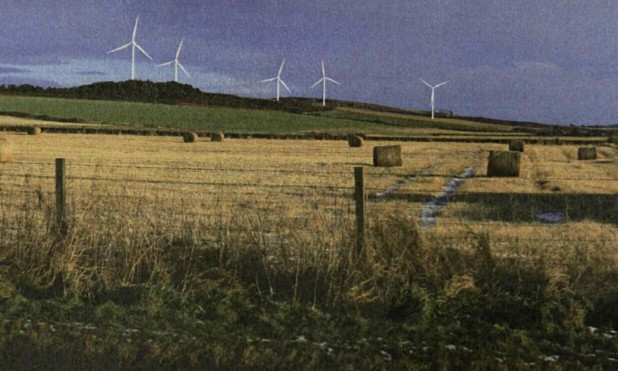Two community councils have urged government planning officials to refuse permission for a windfarm a few miles north of Dundee.
West Coast Energy wants to build five turbines, each up to 400 feet high, along south-facing slopes of the ridge along Lorns Hill and Dodd Hill, which lie east of the A90 opposite Tealing.
Angus Council refused consent for the development earlier this year, claiming it would have an unacceptable impact on the landscape, but the company is now attempting to get this ruling overturned on appeal.
Murroes and Wellbank Community Council objected, saying the windfarm would “change the skyline” for many years to come.
“The turbines will be out of proportion with any other structure or natural feature in the area resulting in enormous, discordant, artificial structures in a predominantly rural, agricultural landscape.
“The impact of the proposed windfarm will be harmful to the countryside setting of the Carrot Hill visitors’ area, the surrounding villages of Wellbank, Kellas, Tealing and many other small communities in the Murroes area,” they said.
Members were also worried the cumulative effect of the numerous windfarm proposals in the area would “devastate” the south Angus countryside.
Graeme Reoch, chairman of Tealing Community Council, noted the company had offered to accept a condition that restricted the height of the turbines to a little over 300 feet, but he said concerns about the visual impact remained.
People were also worried that reduced power generation capacity now might lead to extra turbines being requested for the site later.
West Coast Energy said a balance had to be struck between the competing demands of renewable energy resource exploitation and countryside protection and its proposal had been “sympathetically designed” to suit the landscape.
It added: “It is acknowledged that the proposed development would result in localised adverse change in character, which is common to all onshore windfarm developments due to the nature of the technology employed.
“However, the development is of a scale that would not exceed the capacity of the landscape to accommodate wind energy development.”
No date has been set for the appeal to be determined.
